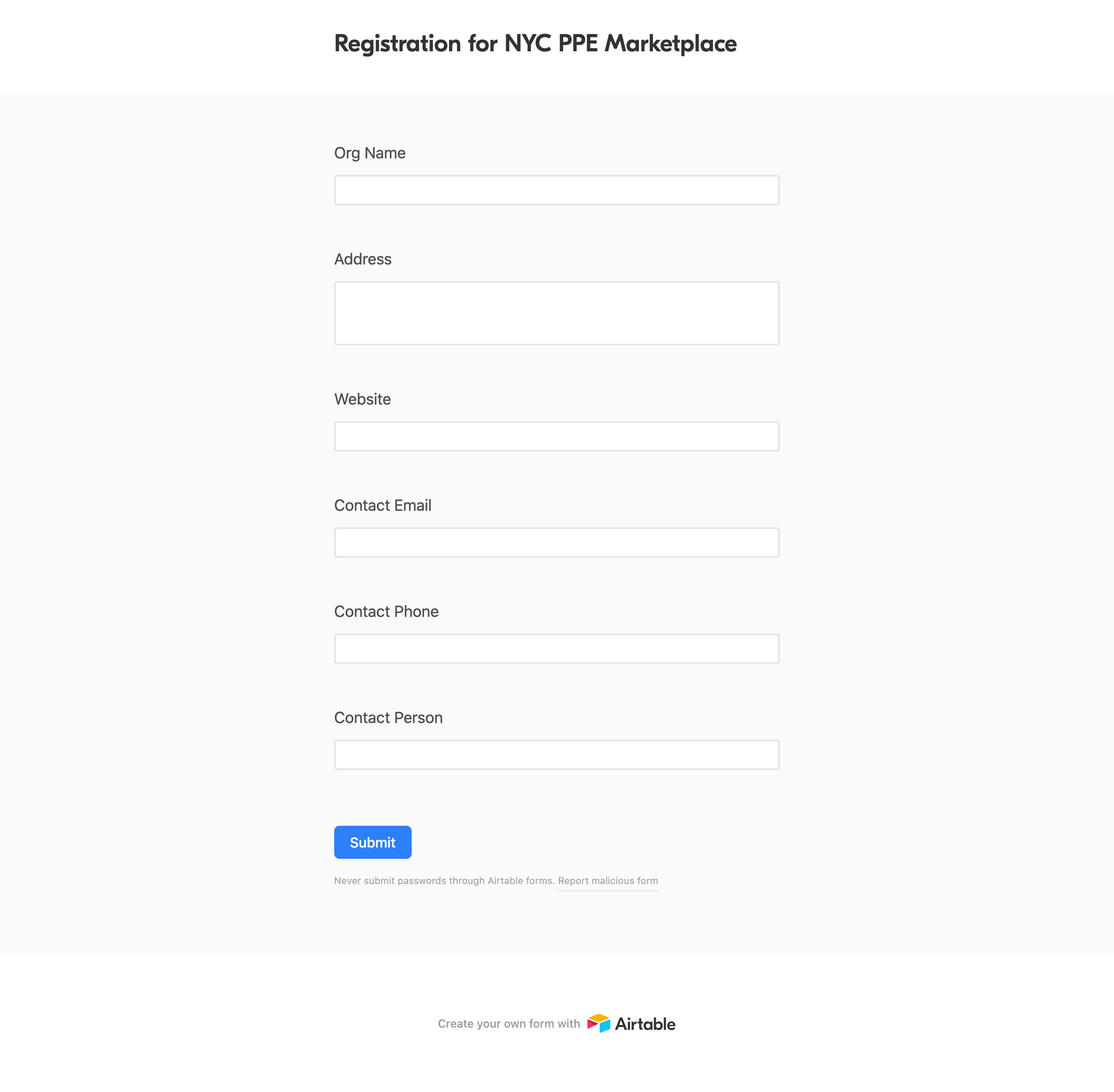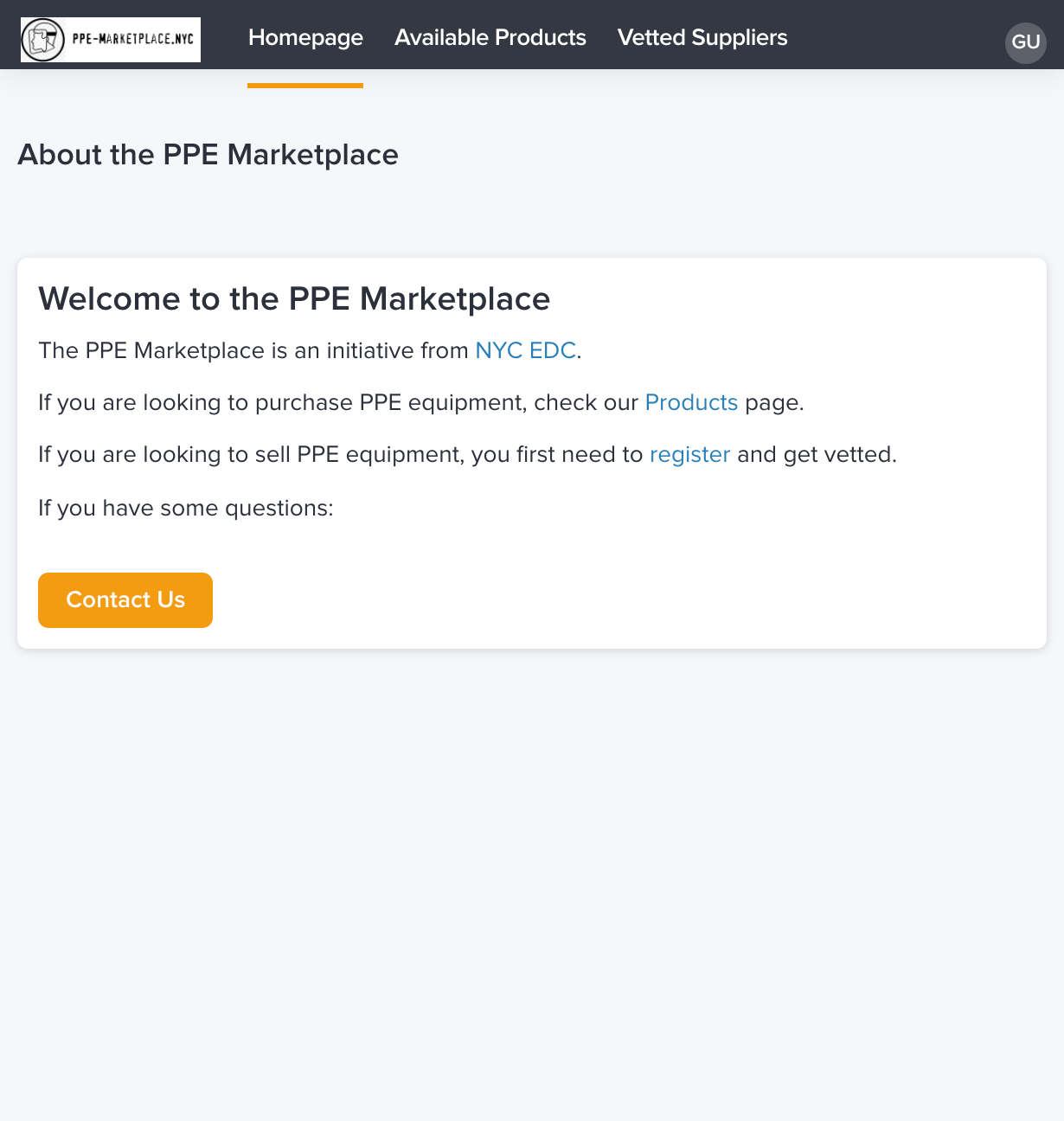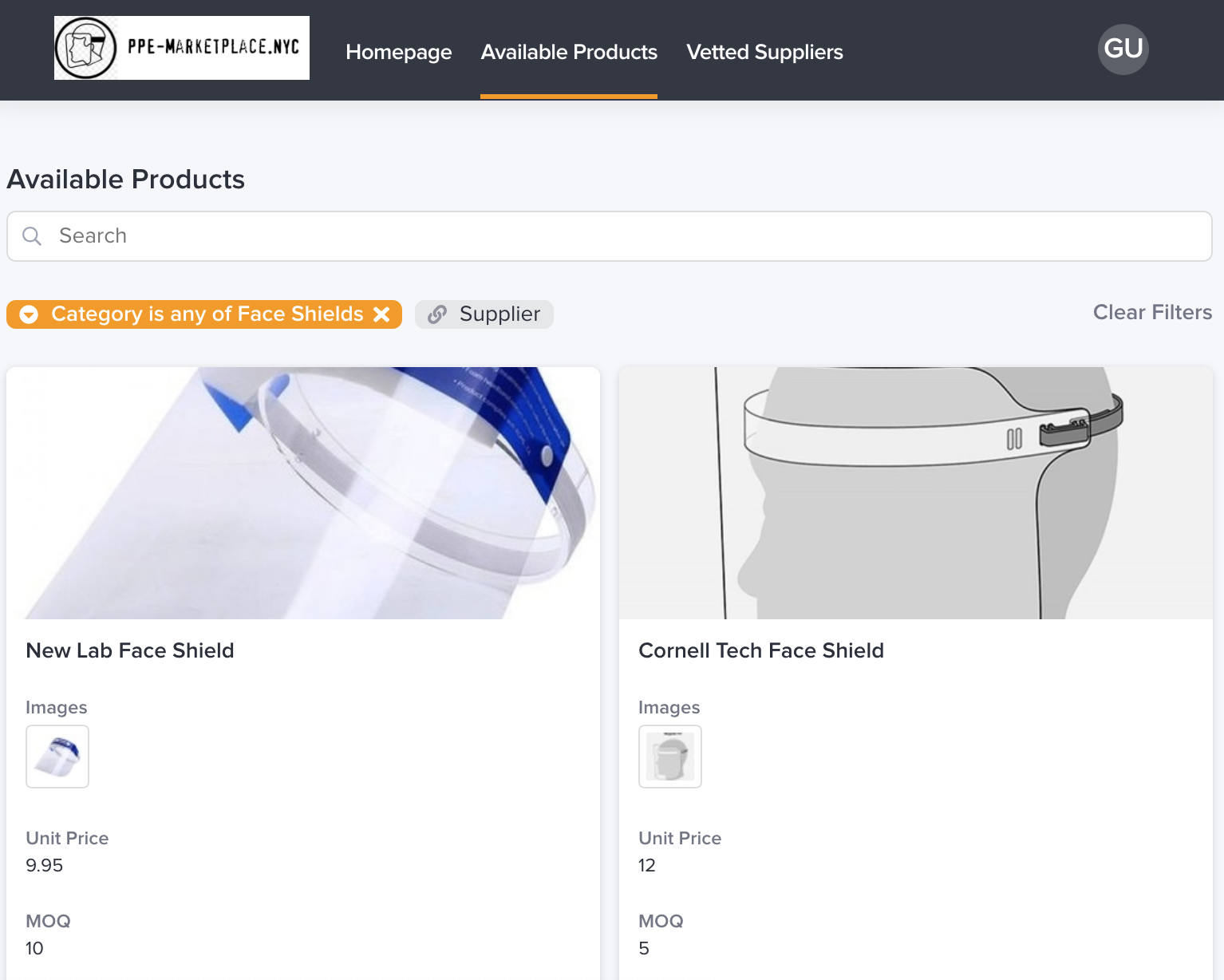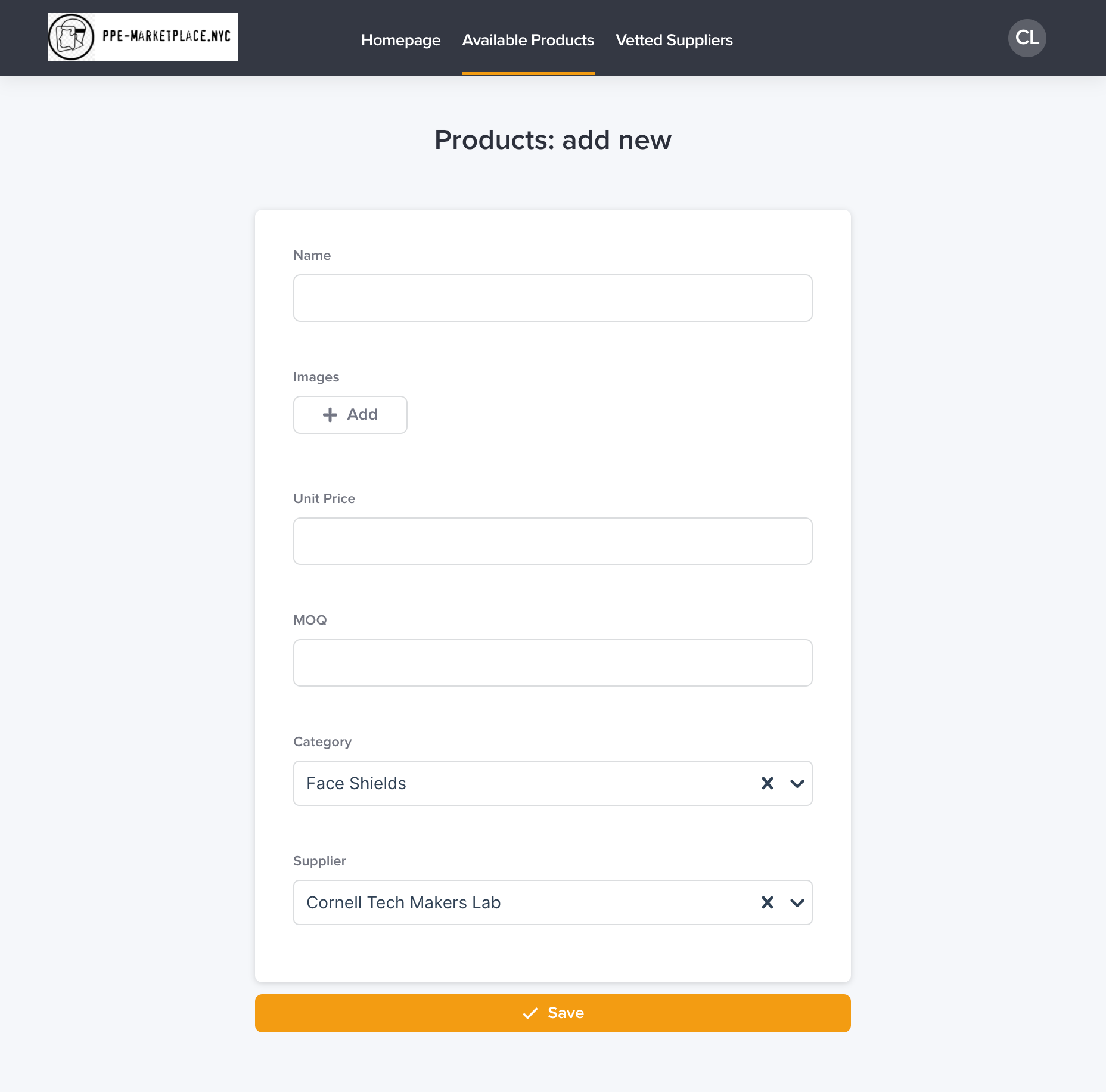Building A Marketplace In 15min
Building a PPE Marketplace using Airtable and Stacker
With post-COVID re-opening, a lot of businesses (large and small) need to purchase personel protection equipment (PPE) for their employees and/or customers.
New York City Economic Development Corporation (NYCEDC) has the mission to “promote economic growth in New York City”. To help with the re-opening, NYCEDC issued a public sollicitation for “Personal Protective Equipment Marketplace” (see PDF; the original webpage has been removed).
From the original document, NYCEDC was asking for
Specifically, we envision that a technology partner would design, develop and host a digital marketplace that has the following features:
- A digital destination where businesses can source PPEs from local (NYC-based) manufacturers and distributors
- A user-friendly interface that invites buyers to search by several product criteria
- A simple onboarding process for both buyers and sellers, which includes, but is not limited to:
- Ability to ask questions of buyers to determine basic information (e.x. zip code, industry, number of employees, volume and type of PPE needed, etc.) as well as potential eligibility for free supplies that may be provided by the City.
- An ability to onboard sellers with various levels of pre-existing capacity to sell online, ranging from limited digital presence to fully developed digital storefronts
- Ability to handle both off-the-shelf items (hand sanitizer) as well as custom (plexiglass dividers)
- Consideration of need for translation and/or accessibility of marketplace in multiple languages
As the co-founder of the NYC Response Lab, a hub for collaborative community solution creation and deployment in response to COVID-19, I felt that this was a sollication we had to respond. But with limited time (the sollicitation was published on June 18th, and responses were due by July 2nd) and limited resources, this was going to be mission impossible, unless …
The first thing was to understand marketplace in a narrow sense. The second was to use the right tools.
The PDF version of our response can be found here.
Building a Kayak rather than an Expedia
From our point of view, the main goal of the NYCEDC sollicitation was to help businesses find PPE providers. Therefore our “lightweight” marketplace should focus on making this matchmaking easy for both parties.
To make an analogy to the travel sector, our lightweight marketplace is a discovery and price comparison tool (à la Kayak) rather than a booking tool (à la Expedia).
By design we chose to ignore direct interaction between buyers and sellers such as financial transactions and messaging, and reviews.
Financial transactions
- are hard to implement correctly, including taxes, shipping cost, etc.
- may require the use of third parties which may translate into extra fees for either buyer, seller or both.
- may require extra work on the seller side if there is a need to link financial accounts or transaction systems.
Direct messaging between buyer and seller
- are hard to implement well
- introduce a new layer of complexity
- may disrupt existing processes sellers already have
Reviews are a known pitfall for any platform because (1) this is user generated content and (2) it is hard to verify that the review is genuine.
Our Proposed User Experience
For the buyer
Using proper SEO, the website will be easy to find for various search terms related to PPE.
ppe-marketplace.nyc is accessible to the public, with no need to create an account.
Once on the marketplace, the buyer can access the Suppliers page and get more information about each supplier.
Once on the marketplace, the buyer can access the Products page and get more information about each product. The buyer can filter by category and by supplier.
Once the buyer has found an item of interest, they can contact the supplier directly, using the most appropriate medium, e.g. email, phone, other.
For the seller
Suppliers need be vetted before being featured on the marketplace. They will need to be reputable NYC-based businesses (NYCEDC wants to encourage NYC business to provide PPE equipment to NYC businesses).
A supplier will first fill a form answering a few questions about their business.
Staff either from the EDC or from ppe-marketplace.nyc will check the information. If the vetting is positive, the record will be marked as vetted in the database. An email invitation will be sent to the supplier to create an account on ppe-marketplace.nyc. If the vetting is negative, an email will be sent to the supplier.
The supplier can edit their profile information.
The supplier can also add new products and update existing ones.
Implementing
To implement the marketplace, we first focused on the data model to represent the marketplace.
The data model
We need to represent Suppliers and the Products they sell. Our lightweight marketplace is public and we don’t need to represent buyers.
This model translated to two tables: Suppliers and Products.
Table Suppliers
Table Products
Nothing too fancy about these two tables:
Suppliersprovide some key information about the supplier- The
vettedcolumn is used to identify suppliers who have been vetted and can be featured on the marketplace. - A product points to a supplier.
- A product belongs to a category, e.g. masks.
At any given point in time, the marketplace features a set of vetted suppliers offering each a set of products. Some suppliers are waiting to be vetted. Some suppliers have been rejected.
The data model in Airtable captures all of this. We now need to make it easy for suppliers to enter their information.
Airtable is not enough :-(
Airtable provides an easy way to enter information into tables using forms. However, once the information is in the table, it cannot be changed unless you provide access to the full table. Early on, we realized that Airtable was not going to be enough to build our marketplace.
After looking around and asking around, Airtable people told us about a similar initiative called Project N95 that is using Airtable and something called Stacker.
Hello, Stacker!
From their website,
Stacker lets you create the digital tools you need to engage your customers, partners and team, all powered by the data in your Airtable or Google Sheets.
Stacker solves some limitations of Airtable by providing a CRUD (create-read-update-delete) interface on top of Airtable and a rich set of views and access control rules.
Using Stacker, you select the Airtable tables you want to link and then you define views for them.
In our case, we linked tables Suppliers and Products.
We used the email field of table Suppliers as the user identity for suppliers.
For each table, you can define various views and corresponding permissions. Here is what we did.
Views for table Products
- Anyone can view all products, but cannot edit or create new ones.
- When the user is also a supplier, the user can create and edit their products.
Stacker generates for us automatically a nice interface to create/edit a product, view a product and view a list of product. For the latter, Stacker offers various display options such as card, board or table.
Views for table Suppliers
- Anyone can view all suppliers, but cannot edit or create new ones.
- When the user is also a supplier, the user can edit their profile.
Note that a new supplier cannot be created using this interface. A new supplier is created using an Airtable form and the corresponding entry has to be marked as vetted before being avaiable in Stacker.
By created a handful of permission rules and making some minor tweaks to the layout provided by Stacker, we got (almost) what we needed.
A few hacks
Stacker is designed to build “portal apps” where users MUST be authenticated. To make our marketplace available to the public, we had to find a workaround.
Since all our users are described in the Suppliers table, we had to create a special supplier called Guest Buyer.
Stacker provides an easy to invite a new user to the platform using a special invite code URL. We used this invite code as the public URL for buyers to use.
By abusing table Suppliers to represent a buyer, we messed up with some of our permissions. Fortunately, Stacker offers an abstraction called Roles.
Using roles, we can tweak views, layouts and permissions. We simply add to assign role Guest Buyer to user Guest Buyer.
Because of its data-driven nature, Stacker does not let you create web pages. To create a new page, you need to create a corresponding Airtable table and use its content to generate the page.
What it looks like
Here are few screenshots of the PPE Marketplace portal.
Supplier registration (using Airtable forms)

Landing page for potential buyer

Searching for products, for the buyer

Adding a product, for the supplier

Overall Experience
The overall experience has been great. Now that I know how things work, creating a new marketplace from scratch should take me less than 10 minutes.
Airtable is a great tool to prototype very quickly. Adding a new column, adding a new PPE category takes 30s on Airtable and then you simply need to tell Stacker to sync the changes.
Stacker gives you a rich CRUD interface out of the box. For most views, I picked the default configuration and it looked good.
Having said that, Stacker has some limitations.
- You cannot style your app.
- Because app access requires to be authenticated, your app cannot be indexed by search engines. For a marketplace, this is not ideal.
- As I was desinging the app, there was no way of embedding tools like Google Analytics. This is now possible.
- I could not find a way to delete a product. A workaround is to mark the product as “do not display”
As of this writing, we still don’t know if we have been selected or not (most likely not). When we submiited our proposal (see here), we knew our chances were slim. However, one possible value of such a proof of concept is to better understand what the final product should look like.
Using Airtable+Stacker, we managed to build very quickly a marketplace that works and we can iterate over very quickly. This is priceless before embarking in a potential long and expensive project.